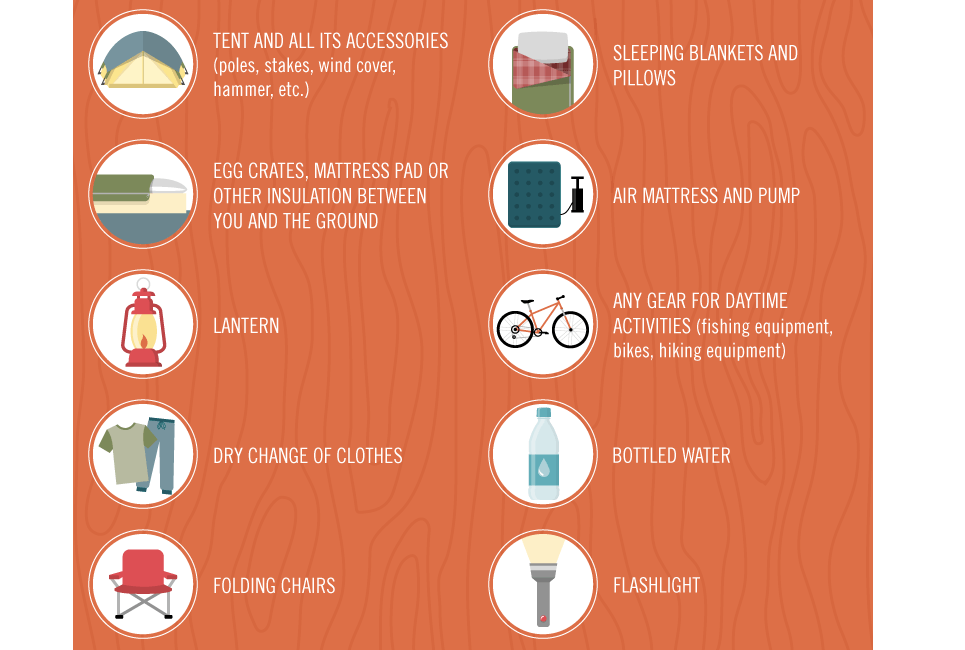Setting up your tent can be a difficult job for also skilled campers. This guide will cover the essentials of pitching a tent correctly and safely so you can enjoy your camping journey without stress or worry.
Are campgrounds a good investment?
Begin by laying out your tent's footprint and ground sheet to safeguard your tent floor from rocks, sticks, dirt, and various other particles. Next off, assemble the outdoor tents posts and attach them to the corners of the tent body using the appropriate sleeve or hook.
Choosing the Right Site
When you are exhausted after a long day walking, you intend to pitch your camping tent and prepare to rest. However you ought to first take a walk around the website to make certain it is risk-free for camping. Look down and up to figure out whether any kind of trees have big dead branches that could fall on your tent. These are sometimes called widowmakers and you do not want them to drop on you while you're resting.
Additionally make sure to prevent low places that can flooding during a storm and to camp far from pet trails, nests and environments where ticks and chiggers are more than likely to flourish. Try to find a flat, rock-free spot that allows sufficient for your tent and any other equipment you'll be bringing.
Some individuals like to set their tents up so the head end is pointed towards the east to capture the sunlight's warming rays first thing in the early morning. This isn't always necessary, yet it is a wonderful touch that can assist wake you up.
Pitching Tips
It may seem noticeable, however appropriate tent throwing is just one of the most crucial factors in a good night's rest. Having a practice run in the house will help you acquaint yourself with your tent, locate all the post sleeves and fasteners, and see to it every little thing is in place. It's additionally a fun time to practice making use of guylines for stability and to uncover any type of broken items.
When you come to your outdoor camping website, check out the surface to see if it's suitable for your outdoor tents. A great rule of thumb is to pitch the outdoor tents on a flat, degree area with a slight downhill angle. This will certainly enable rain to recede from the camping tent rather than merging in front of it.
If you can not discover a degree area, consider positioning a tarp or various other groundsheet under your camping tent footprint to protect it from dampness. This can likewise assist maintain dust out of the tent.
Making Use Of Guylines Efficiently
Using individual lines efficiently is essential to seeing to it your camping tent or hammock stays safe in high winds and other negative weather. A person line is a rope or cord that affixes to the ground through loopholes and D-rings in the structure, tarpaulin, or rainfly.
Start by safeguarding one end of the line to a guyout loop on your camping tent or rain fly, or to the pole it's affixed to. Then loophole the other end of the line over a risk put faraway from the structure and tighten it.
Maintaining your shelter's man lines tight will stop drooping or drooping throughout windy problems, avoiding dampness from seeping right into the outdoor tents or damage to the structure and boosting comfort and safety and security during outdoor camping. Constantly check the stress of your man lines throughout and after negative weather conditions glampung tent to guarantee they remain safe and secure. Additionally, consider loading a guy line tensioner to quickly adjust and preserve the correct amount of stress in your lines.
Taking Down the Outdoor tents
When working out right into your campground, locate an area with a level area and clear it of rocks and particles. Likewise, make sure to put down a camping tent footprint or tarp slightly smaller than your tent body to stop water merging. This aids maintain your camping tent completely dry from rainfall or condensation and can be specifically handy in gusty locations.
Analyze your gear, including the tent stuff sacks to ensure nothing is missing. Inspect that the poles fit into their clips and restock first-aid items if needed.
When it's time to pitch your tent, begin by orienting the doors downwind, and stake down each corner of the tent. If the ground hangs or sandy, consider spreading a tarpaulin under your tent to secure it from wind and reduce the probability of your outdoor tents tipping over. Likewise, make certain to use guylines successfully to restrain your rainfly and keep it taut. A well-pitched outdoor tents can prevent leaking, condensation, and sunlight damages.
How much are pop up tents?
